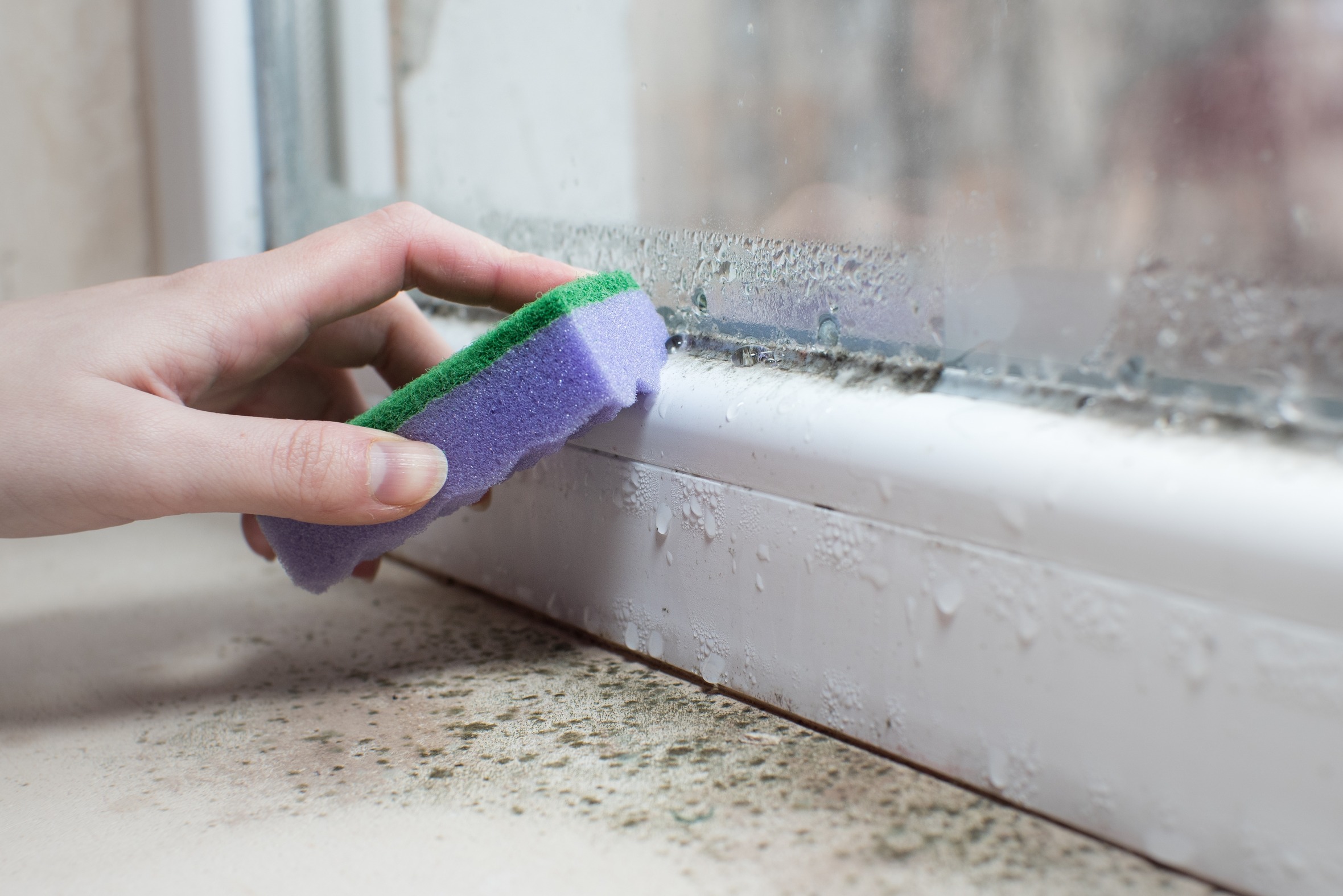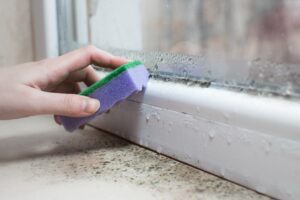Managing mould in your home
In a poorly ventilated home, moisture can develop quickly. When left untreated, this moisture can very easily develop mould. Mould is a breeding ground for bacteria, and should be treated immediately. If not dealt with swiftly, this bacteria can trigger respiratory infections and cause serious illness.
It’s important to get on top of mould quickly, and efficiently. We’ve put together some advice on understanding mould, and the best way to deal with it.
Take a read below.
The key principles to understanding mould in our homes
Mould needs moisture to grow.
- Drying out our homes helps to reduce mould.
- Mould occurs naturally in the air – all it needs to grow in our homes is moisture and some food (dust will do!)
Mould in our homes is bad.
- Mould is linked to poor health, particularly respiratory problems. Through prolonged exposure, serious health problems can occur.
Mould needs to be cleaned off all surfaces in our homes.
- Cleaning means physically removing mould and what it is growing on by rubbing and scrubbing with warm soapy water.
- Small patches of mould turn into large patches quickly. Clean mould as soon as you see it.
Sometimes cleaning is not enough – for example, if the mould area is big or is embedded in the material you can’t easily scrub.
You might need professional help to manage extensive mould infestations (e.g. to replace parts of mouldy walls or ceilings) or you may have to completely replace mouldy curtains and carpets.
What can you do to prevent mould in your home?
Dry your house
Our homes are damp for lots of reasons: find where the moisture comes from and stop it coming in or get it out.
- Find and fix leaks – check your roof, walls, under the floor, plumbing pipes under the sink etc. Mould is your guide: for example, if there is mould on the ceiling, start by checking the roof for leaks.
- Get steam out – showers, baths and cooking make lots of steam. Install an extractor fan that vents to the outside in the kitchen and bathrooms. Always use the fan and open windows to clear steam from the room. Don’t let steam make other rooms damp – close kitchen/bathroom doors until steam has cleared.
- Dry your washing outside – a load of washing dried inside can release up to five litres of water into a room.
- Don’t use unflued LPG heaters – one litre of water is released every hour of use.
- Air out your home – living and breathing puts moisture in the house. The best way is a ten to fifteen-minute “burnt toast blast”, i.e. open lots of doors and windows. This releases damp air, bringing in fresher but colder air that is drier (and easier to heat). It is good to do this in the morning and repeat when you see moisture building up.
- Remove condensation from windows and window sills – dry it off daily with a cloth (make sure you dry the cloth outside). Insulation and heating can help reduce moisture on windows by making your house warmer – moisture will stay in the air rather than settling on surfaces.
For more information on what causes moisture in your home, check out this blog.
Clean all mould as soon as you see it.
This is a very active job with FOUR steps (check your home and repeat these steps every time mould appears).
| Step 1: Protect yourself | Wear gloves, a mask and eye protection. Wash your clothes afterwards. If you have allergies or asthma, ask someone else to do the cleaning. Open windows and doors while you clean so the room is well-ventilated.
Warm soapy water is the cheapest and least toxic cleaning solution. Strong chemicals like bleach take the colour out making the mould invisible but leaving some mould alive. |
| Step 2: Scrub | You need to remove all mould and what it is growing on. Scrub hard with an old toothbrush, scrubbing brush or a cloth to get all mould off the surface. Clean your brushes and cloths well or throw them out. |
| Step 3: Rinse | You want to make sure no mould is left, so flush the cleaned area with water or rinse with fresh damp cloths. |
| Step 4: Dry | Dry the area off with dry clean cloths. Try to keep it dry from now on. |
For mould on fabric (e.g. bedding, curtains), either wash and dry thoroughly, take it to dry cleaners, or throw it out. Read the manufacturer’s instructions.
Seek professional help if there is a serious problem
If the mould area is too big for home cleaning (more than a square meter), you (or your landlord) need to contact a professional cleaner (search the internet to find help in your area).
Mould can occur on parts of our home that we can’t clean effectively and the only solution is to remove and replace mouldy areas. For example, mouldy sections of the wall, floor or ceiling that can’t be scrubbed may need a building professional to cut out the mouldy rotten bit, stop moisture from coming in (e.g. fix leaks), and replace.
If you are doing all you can to dry your house and remove mould but can’t get on top of it, then you might need expert ‘whole of house’ advice. Seek a certified Home Performance Advisor in your area. (Community Energy Action has these available).
Contact us for advice
If you’re unsure of how to effectively deal with mould or are looking for more advice, contact us. We offer free advice to help you deal with any problem that may be affecting your home.
Notes:
This advice sheet was collated by The Home Performance Advisor Training Programme. It draws on research by Beacon Pathway and BRANZ, and best practice mould remediation advice from Australian researchers. It reflects advice given in New Zealand by Certified Home Performance Advisors and Eco-Design Advisors.
Cowan, V., Burrough, L. and Ryan, V. (2010). Unflued Gas heater Fact Bank.
Kemp, P. and Neumeister-Kemp, H. (2010). The Mould Worker’s Handbook: a practical guide for remediation. Australia: EnviroTrust. 2nd Edition.
McDowall, P. (2017. Open windows for dry home. BRANZ Build magazine 158: p84-85. https://www.buildmagazine.org.nz/articles/show/open-windows-for-dry-home
Phipps, R. (2007). Indoor Environmental Quality. Report TE220/4 for Beacon Pathway Ltd. http://www.beaconpathway.co.nz/further-research/article/reports and presentations indoor environment quality
Taptiklis, P. and Phipps, R (2017). Indoor Air Quality in New Zealand Homes and Schools. A literature review of health homes and schools with emphasis on the issues pertinent to New Zealand. BRANZ Ltd 2017
Home Performance Advisor Training Programme:
http://www.beaconpathway.co.nz/further-research/article/home performance advisor training
Eco-Design Advisor Network:
http://ecodesignadvisor.org.nz/reducing-moisture-condensation/







